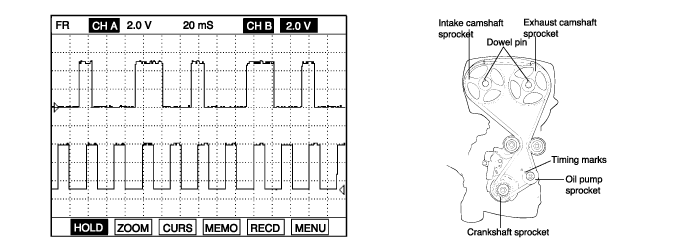Check Timing
Ignition "OFF"
Check that Cam, Crank and Oil pump sprocket timing marks are correctly in alignment.
Engine "ON" & Monitor signalwaveform from CAM and Crank shaft position Sensor are correctly in alignment.

Are all timing marks alligned correctly ?
YES
▶ Go to "Check Fuel Pressure Test" as below.
NO
▶ Repair or readjust as necessary and go to "Verification of Vehicle Repair" procedure.
